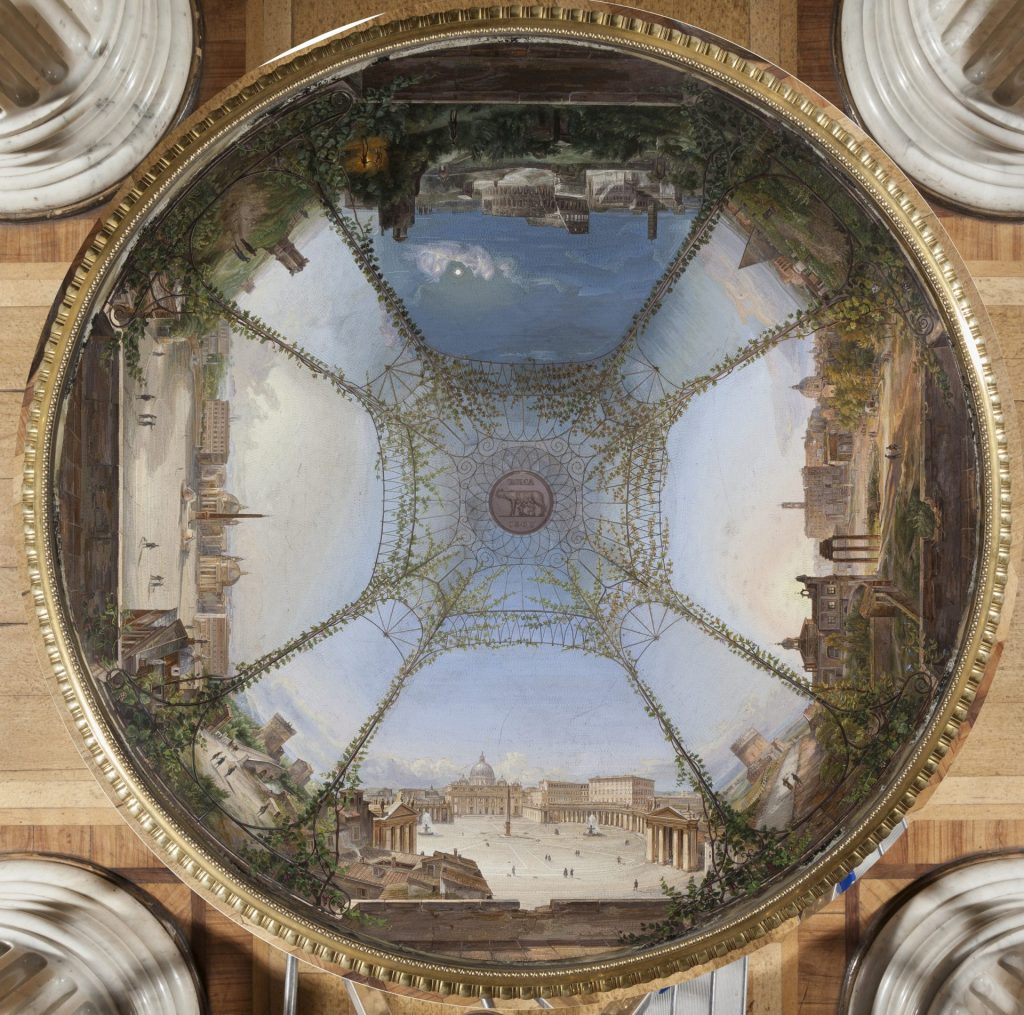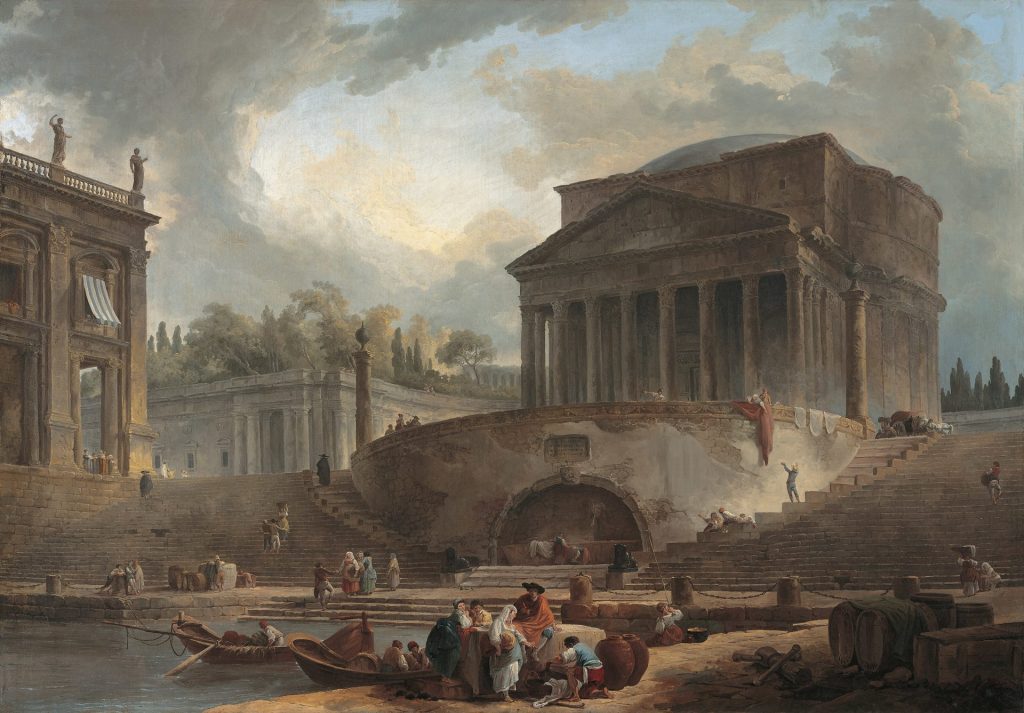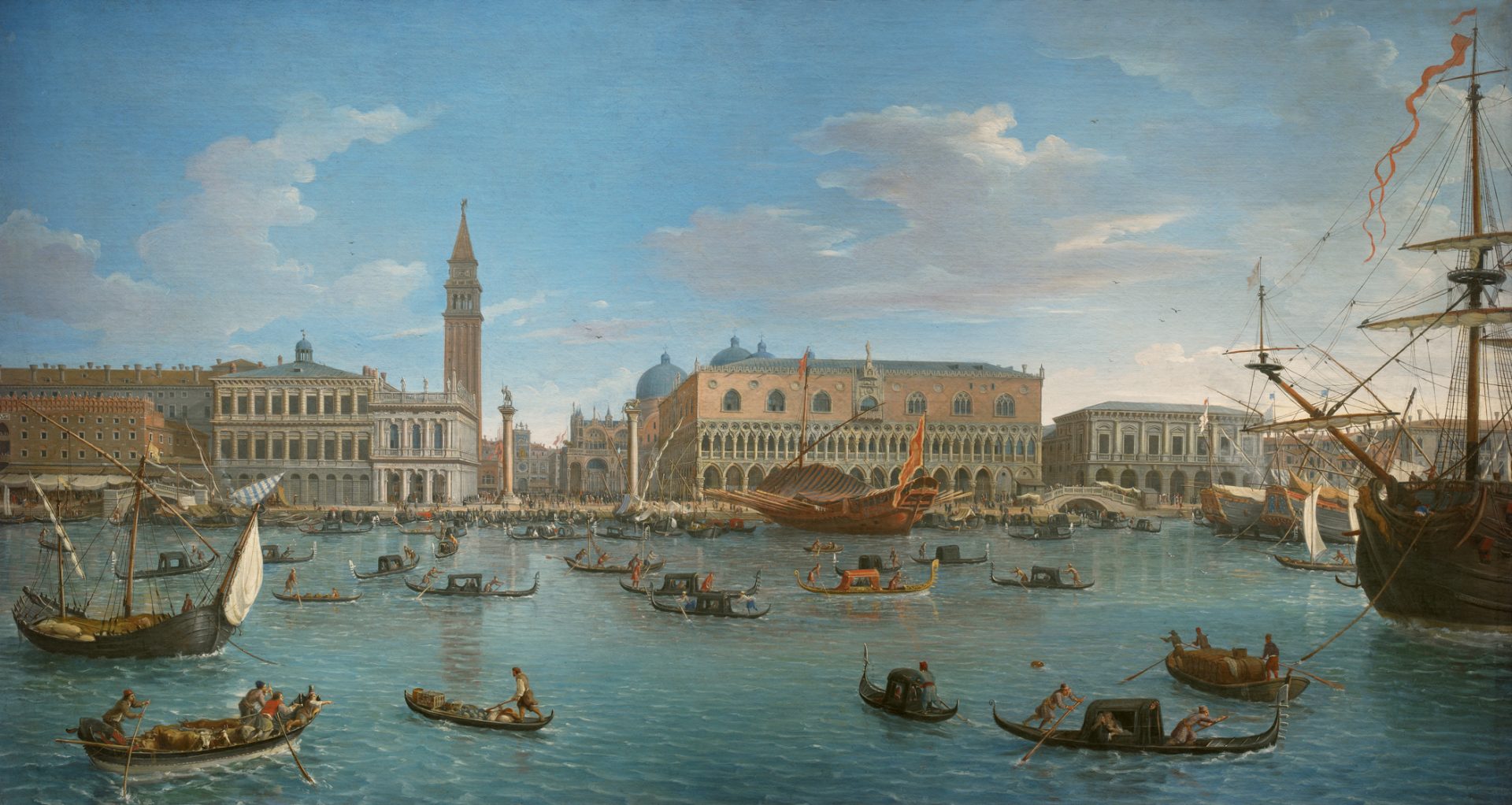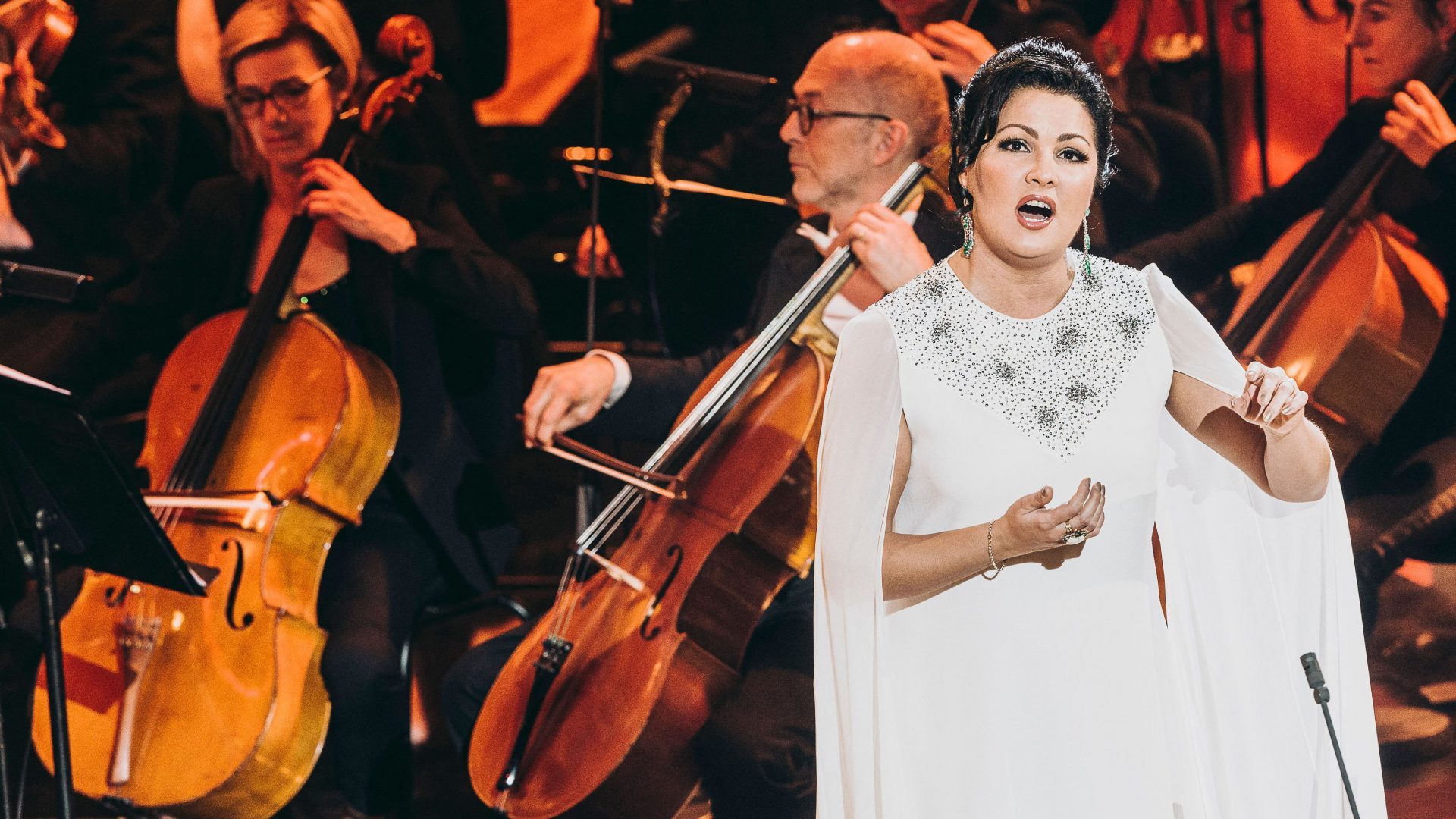James Boswell, the 18th-century chronicler and diarist, found foreign travel a splendid opportunity for hanky panky. He recalled meeting a certain Madam Micheli in Italy: “Yesterday morning with her. Pulled up petticoat and showed whole knees… Touched with her goodness. All other liberties exquisite.”
Boswell was making the most of the Grand Tour, the 17th- and 18th-century rite of passage – cultural and otherwise – in which everyone who was anyone in European society flocked to Italy to admire the art, scramble over the ruins of Roman palaces, and, of course, consort with the likes of Mme Micheli.
His mentor, Samuel Johnson, took a more elevated view: “A man who has not been in Italy, is always conscious of an inferiority, from his not having seen what it is expected a man should see… almost all that sets us above savages, has come to us from the shores of the Mediterranean.”
Unsurprisingly, the exhibition Grand Tour, the dream of Italy from Venice to Pompeii at the Gallerie d’Italia, Milan, adopts Johnson’s loftier perspective, with more than 130 paintings beautifully presented in gilt frames that glow against the warm umber of the gallery walls, along with sculptures and elegant objets d’art.
Most of the travellers were from Britain, stoically making the arduous journey across Europe, taking months to travel from London to Paris, stumbling and creaking across the Alps in horse-drawn carriages, along the northern lakes of Como and Maggiore to Turin or Milan and Venice, and south to fabled classical cities such as Bologna, Lucca and Florence.
Naturally, all roads led to Rome, though the lure of Naples – “the flower of paradise”, as French novelist Alexandre Dumas dubbed it – and the smouldering threat of the volcanic Mount Vesuvius proved hard for the more intrepid to resist.
The exhibition shows us today what the travellers saw centuries ago through the eyes and paintbrushes of Canaletto, Bellotto, Ingres and Zoffany, and artists whose names are less familiar today but who were much admired in the years of the Grand Tour – Dutch painter Gaspar van Wittel, Michelangelo Barberi, Carlo Labruzzi, Giovanni Lusieri and English painters such as Thomas Patch and George Wright of Derby.

What is so extraordinary is that so much of what they painted is still there today. Rebuilt, restored, resurrected, but always recognisable. Take Canaletto’s A Regatta on the Grand Canal (1740). The artist himself might be amazed at how little has changed. The flag-bedecked palazzi that overhang the water are still deceptively scruffy; there are more gondolas than you would see today, but the over-the top decorations on the boats, the costumes of the participants, are as close to Canaletto’s day as they were when the first regatta raced in the 14th century.
Just as evocative, just as unchanged, is View of Venice with the pier, the small square and the Doge’s Palace from the basin of San Marco (1707) by Gaspar van Wittel, while the glamour of it all is beautifully observed in Giulio Carlini’s The Tolstoy Family in Venice (1855), as the smartly dressed family stand tentatively on the quayside by St Mark’s, waiting to be whisked along the Grand Canal on a gondola.
There are tourists wandering among the goats and sheep on the hills above
Florence in Thomas Patch’s view from the Bellosguardo hills and if the old walls have all but disappeared and urbanisation has invaded the slopes, the Duomo, the bulk of the Pitti Palace and Santa Maria Novella still loom over the city.
On the way to Rome the weary traveller may have stopped off at the waterfall near Terni to wonder at another work by Patch, a spectacular cascade made by the Romans that spills over cliffs into turbulent water below from 541 feet, or perhaps joined the aristocratic group in the gloomily Gothic grotto of Neptune near Tivoli (Abraham-Louis-Rodolphe Ducros, 1782).
At last, Rome; the View of the Colosseum with Constantine Arch (1697) – also by van Wittel – its broken bulk set in scrubby land with a few visitors wandering around. A far cry from the Vespa chaos of today, but unmistakably the building commissioned in AD70-72 by Emperor Vespasian and opened in AD80 by his son Titus with 100 days of games.
The confusion of a half-collapsing arch and jumble of old stones in View of the Roman Forum (Michelangelo Barberi, 1854), the Pantheon looming over the port of Ripetta, long replaced by the busy road alongside the River Tiber by Frenchman Hubert Robert (1761), and a sort of mash-up by Giovanni Panini (1734) that jumbles together the Pantheon, the Antonine Column, Marcus Aurelius on horseback and other Roman monuments – they all illustrate why Rome is called the Eternal City.
By way of contrast to the almost claustrophobic representations of Rome’s grandeur, Naples is portrayed as an open city, languidly sprawled along the curving bay. In View of Naples from the Ponte della Maddalena (1791) Giovanni Lusieri, a popular figure among those on the Tour, shows elegant ladies and gents disporting themselves politely on their passeggiato, while the view from
the house of Sir William Hamilton, the British envoy to the court of Naples, also by Lusieri, was created with such purity of colour that many believed the artist had used a telescope or camera obscura to ensure the detail. Hamilton’s house was in the Pizzofalcone district of the city, now a crowded district of churches, run-down palazzi and slums.
And always, lurking across the bay the looming mass of Mount Vesuvius, even more of an attraction by the mid-18th century thanks to the unearthing of the extraordinary ruins of Herculaneum and Pompeii, which had been buried under tons of lava by an eruption in 79AD. Few captured the apocalyptic vision of the exploding volcano with greater drama than the English painter Joseph Wright of Derby with his 1778 View of the erupting Vesuvius with the head of San Gennaro carried in procession. (San Gennaro is the patron saint of Naples, in whose cathedral two ampoules are said to contain the saint’s blood.) In contrast, Thomas Jones’s bucolic view of 1780 through trees and across the bay shows Vesuvius on the horizon with just a gentle whiff of smoke emerging into the sky.
As well as capturing the marvels of Italy, many of the artists supplemented their income by painting the tourists, particularly the young and the rich. The most prolific of the portraitists was Pompeo Batoni (1708-1787), who
painted more than 175 travellers and has an entire hall given over to him at
the exhibition.

He was the Instagram influencer of his day and he kept his work simple. One pose did the job – the subject leaning nonchalantly against a statue with a dog at his feet. They are of a type – young and entitled and all exuding a louche elegance that suggests they were more in the mould of the Boswell school of tourist than engaged in any pursuit of culture.
With the chaos of the French Revolution between 1789 and 1799 and wars across Europe, the enthusiasm for classical culture waned and the appeal of the Grand Tour faded. But Italy remained a magnet for poets, novelists and writers such as Joseph Addison, founder of the Spectator magazine, who in 1705 published Remarks on several parts of Italy, etc.
He enthused about the marble: “It is almost impossible for a man to form, in his imagination, such beautiful and glorious scenes as are to be met with in several of the Roman churches and chapels”, and he greatly admired the marbled facade of San Peter’s Basilica in the Vatican. “Though every thing in this church is admirable, the most astonishing part of it is the cupola displayed in all its finery.” We can see the object of his esteem in the rich representation by Michelangelo Barberi, made all the more resplendent by the gleaming gilt of the frame.
Many years later in 1867, American writer Mark Twain went on what he called the “first organised pleasure party for a transatlantic voyage” and two years later he published The Innocents Abroad, an account of a six-month journey through Europe and the Holy Land.
He was equivocal about the experience: “As far as I can see, Italy… is today one vast museum of magnificence and misery… It is the wretchedest, princeliest land on earth.”
But he was unequivocal about Florence: “My experiences of Florence were chiefly unpleasant. I will change the subject,” he wrote, and cited Titian’s Venus of Urbino, in Florence’s Uffizi Gallery, as “the foulest, the vilest, the obscenest picture the world possesses”. Yet there she is in her shameless splendour, right at the front of Johan Zoffany’s painting of the gallery jostling for attention on the crowded walls alongside masterpieces by Rubens, Holbein and Raphael.
The novelist EM Forster, who was a frequent visitor to Italy, shared Twain’s ambivalence about the harsh reality that contrasted with the treasures he
so enjoyed. He decried “that ragged picturesqueness – the picturesqueness
of large poverty – on which we feast our idle eyes at Rome”, and was all too
aware of the way the society’s failings rarely intruded on the sensibilities of the tourist. In his 1908 novel A Room with a View, his heroine, Lucy Honeychurch sits pensively in the Basilica di Santa Croce but without her
handbook to northern Italy.
“With no cultural authority to tell her what to think,” Forster wrote, “the pernicious charm of Italy worked on her, and, instead of acquiring information, she began to be happy.”
Grand Tour, the dream of Italy from Venice to Pompeii, at the Gallerie d’Italia, Milan, until March 27. Sponsored by Intesa Sanpaolo banking group
Richard Holledge is a freelance journalist and author of Voices of the Mayflower (Troubador Publishing)




